Bolivia: Mt. Bethel UMC Men in Quesimpuco
Our last Bolivian team of the year is in Quesimpuco this week. Each year, Mt. Bethel UMC takes an all men’s team to this remote area high in the Andes Mountains. John Moxley, a former team member, has received a few phone calls from the team and shared with friends and family what the team has been doing. In Quesimpuco, the only communication available is through a satellite phone or one phone at the town hall. There are no current pictures to accompany this post, but John has done a great job adding details from his personal experiences to explain what the team is experiencing.
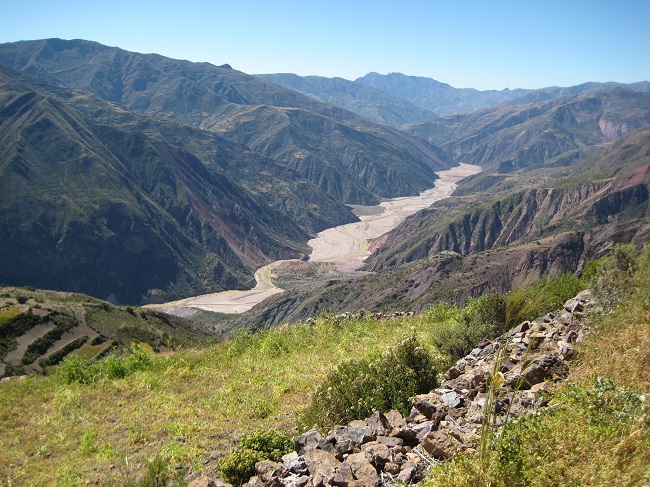
SIFAT teams have been helping the people of Quesimpuco for almost two decades. Within this beautiful landscape, daily life is a struggle with harsh obstacles. But, the people are improving their lives with education and opportunity! We are seeing a generation of young adults returning to serve their own people.
Saturday Update
Yesterday went better than expected: a long drive, an enjoyable picnic beside a lake with flamingos, and most importantly: no problems! No flats, mechanical issues or overly bad road conditions. Given what they just drove through, this is an accomplishment. They arrived at about 9:15 p.m., and it is, indeed, a tiring drive. The last several hours are very off road, plus being in a car for 11+ hours is just no fun. However, the team had enough energy to unpack and have a devotional. While Carey did the first devo, each team member will have a turn this week. Additionally, Carey set the team up with a daily scripture to read and focus on. Our team is covered up with God’s word, fellowship among themselves, and prayer from you. Great things are bound to happen!
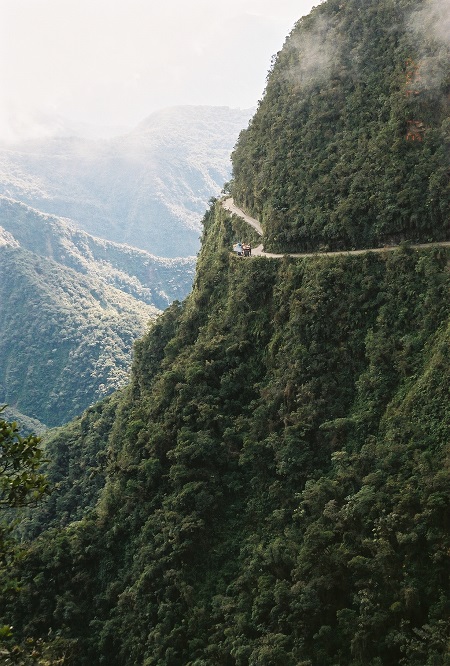
The road to Quesimpuco – not for the faint of heart! Drastic drops, no guard rails and narrow “lanes” keep drivers alert.
Saturday morning included more unpacking and a bit of time setting up the “bunkhouse”. Where they are staying is about equivalent to a rustic camping facility: a hardened building (“building” by US standards), all enclosed, bunk rooms with about six bunk beds to a room, several bathrooms with running water (but not heated!), and a very basic kitchen (no oven, 2 gas eyes, plenty of pots, pans, utensils and a big double sink to wash dishes). Electricity just for lighting at night provided by a generator. One of the key ongoing tasks is filtering water. The water that is plumbed in is not OK for us Gringos, so large filter pots are set up for everyone to use. First thing each morning they are filled up. Every time anyone is in the bunk house, they are re-filled, and again before bed. It takes several hours to filter.
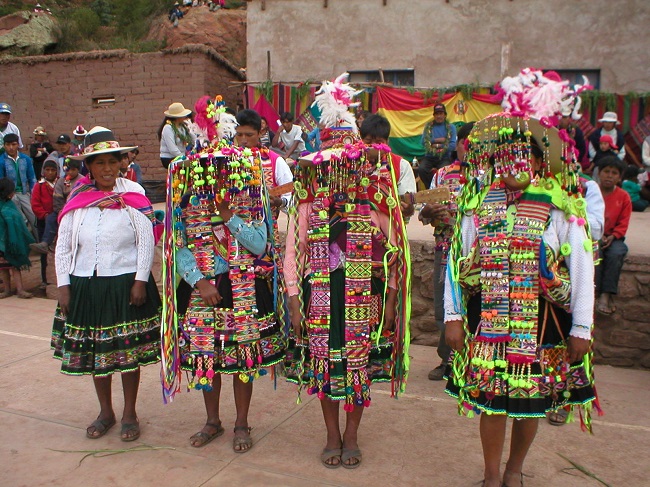
Teams are often greeted with a celebration, which includes community members wearing their traditional dress and performing dances.
After this quick set up, the team walked down to the village. The walk is about a half mile down a wide dirt road, dropping some 200+ feet in elevation. Along the way, they will see a few scattered houses with small plots of crops, and a tight, small fence right up next to the house for a few livestock, mostly goats or sheep. If there has been rain recently, there will be a creek that flows across one section of the road. After walking to the village, they went to the church to a grand welcoming ceremony. (For those who have been in the past, this is a bit different, in that the local school — the only one for many miles around — is now run by the government, so the school children do no come up to the bunk house.) Music was played, old friends were greeted from previous trips, and large elaborate flower necklaces are placed on each team member. They are a work of art, and represent a significant undertaking to put them together for a community that is struggling out of a hand-to-mouth existence. The Quesimpuco people go out of their way to welcome our team. One of the more important aspects of the welcoming is to learn the proper Bolivian hand shake/half embrace.
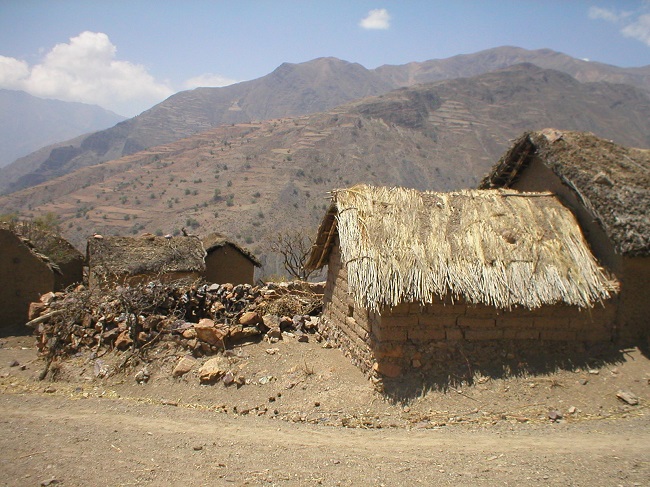
After all the welcoming, the team was working their way back up to the bunk house when they came across an all hands “house raising”. Most all able folks from the village had turned out to build a new house in short order. It is an adobe style, and they were laying bricks – mixed with rocks and left over ‘straw’ from a recent harvest. The team jumped right in doing their best to help. Communication is always an issue, and tools are almost nonexistent, while building methods are quite different. So, the team did what they could, hoping that the net effect was helpful. As always, showing love and support to the Quesimpuco folks are why we are there, and the team succeeded in that.
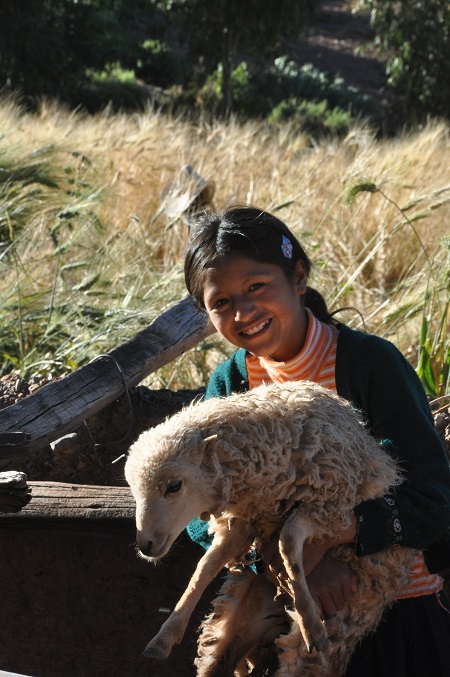
Next, the team had lunch and their devo. Afterwards, looking to see what trouble they could get into — I mean what help they could be, they came to yet another “house raising”, this one putting on a roof. A lesson was had by all on how to install a thatched roof — with no modern tools nor fasting at all — and it has to be water proof. (I wonder if any of the team volunteered to sleep there during the next rain…) For those of the team making their first trip to Bolivia, these two house raisings were a good introduction to “appropriate technology,” a term they will use many times and will explain to you upon their return.
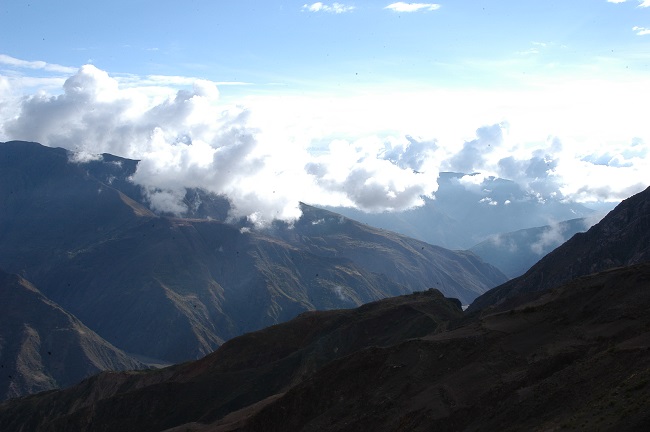
After becoming expert roofers, the team toured what is believed to be the remains of an Inca fort, up on the peak of the mountain at an angle away from the bunk house and away from the village. It was a clear day, and the views from here are absolutely stunning. You can see for miles. If your eyes are good, you can pick out villages on the other side of the valley, on the next mountain, where children come from for the only medical clinic and school for miles – in Quesimpuco. The bridge built by previous trips is how they get to Quesimpuco. The team marveled at God’s creations, picked around for pottery shards and enjoyed the weather (mid 60s). Next, they surveyed where they are going to be digging for crop irrigation. Then back to the bunk house.
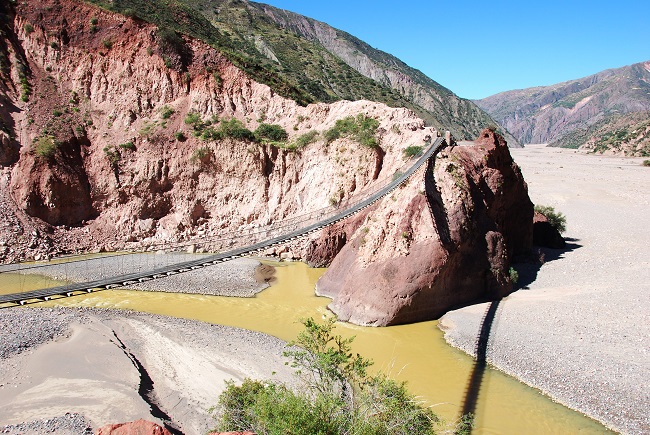
This bridge was built by many community members with guidance from SIFAT teams. It provides access for thousands of people to reach Quesimpuco – even when the river below floods during the rainy season.
At the bunk house, another devo, prayers and “music” (we often remind ourselves that the Lord said “make a joyful noise” — He didn’t say it had to be harmonious). When I spoke to the team, part were preparing supper: a chicken chilli with fresh tomatoes, beans, celery and chilies. As usual, they have gotten a good haul of fresh veggies and fruit with a little bit of fresh meat — all set up by Benjo and Issac. The prediction is that they will come home a few pounds heavier.
Sunday Update
Yesterday was a day of worship and rest for the team. A great time for them to deepen and establish relationships with the folks with whom they are working. The worship sessions are quite interesting with a mix of Spanish, Quechua and a little English. Despite the language mixture, the worship and praise for our Lord comes shining through. Of particular enjoyment are the young children. Like all young children everywhere, they get restless, and at the same time, curious with their visitors. We often wind up changing seating and have children we are exchanging notes or drawings with.

A previous Mt. Bethel team during church on Sunday. The children become instant friends!
Most likely yesterday also included visiting one or more homes in Quesimpuco. A home here is commonly a single room with a dirt floor. The bed will be raised, but still dirt, with straw or a mat to lie on. The walls are ‘bricks’ made by hand from the local dirt and rocks, with straw mixed in. The roof is thatched. These are the types of homes they helped with on Saturday.
Raising the health and nutrition standards for the area is a key thing to which SIFAT has committed and is the mechanism by which they witness and share God’s love. As improvements are made, the next prevalent concern is addressed. In these single room, adobe homes, cooking is done with an open fire in the middle of the room. This is also the only source of heat. In the older homes, not only is the ceiling black, but the walls are also black halfway down, covered in years of soot. Not surprisingly, lingering colds and respiratory issues are frequent in the elderly (“elderly” sometimes being as young as 60). SIFAT, working with the Bolivians, are introducing a simple to construct (using local available materials — “appropriate technology”!) rocket stove. Theses stoves use much less fuel and are so efficient they are almost smokeless. Teaching how to build and use these rocket stoves are a part of the goal for our team this trip. Yesterday, they most likely got to see why this is important.
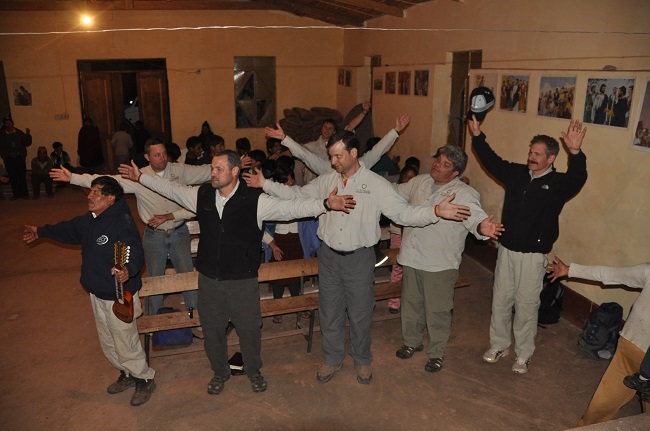
Spanish, Quechua and English are all spoken during church services in Quesimpuco!
Monday is expected to be work in Quesimpuco, digging for crop irrigation. As recently as two years ago, Quesimpuco was harvesting a single crop each year, because of a single, short rainy season. This gave the people just barely enough to live on, including a bit to feed their livestock. Should there be any problems with the crop at all (too little rain, too much rain, a late frost, …), someone goes hungry. With the improvements that have been ongoing, this past year some farmers were able to harvest three crops! This is a huge improvement and lifts the entire community, allowing them to improve nutrition, share with others and work on the next concern. Your man is not just digging a ditch today. He is improving a community — working elbow to elbow with the folks he is helping. He is showing God’s love.
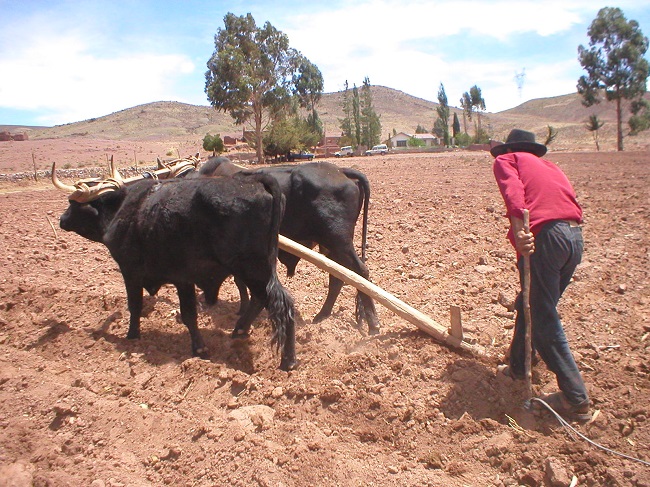
With improved irrigation systems, local farmers are now harvesting more than one crop a year, giving them more food security and better nutrition.
Monday Update
First and foremost, everyone is doing well, no issues at all. Given that they have been eating local(ish) food and water, while working at a high altitude, this is a good accomplishment! Yesterday went just as expected: two church services, and yes indeed, enjoying the young children during the services. It turns out that Mark Young has taken on the role as chief cook, about which everyone is well pleased.
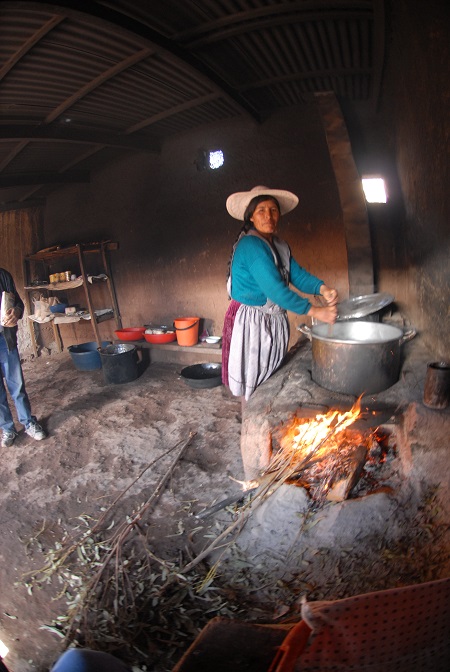
Today was irrigation work, as expected. It was not for Quesimpuco, but another village. Branching out – by request of the other villages, because of the improvements they have seen in Quesimpuco. Bert mentioned the importance of this work: providing two or three times the crops and the effect it will have in lifting the community. The work they were doing today was near the top of another mountain – more than 14,000 feet. Digging ditches and laying pipe at that elevation certainly will catch you short of breath!
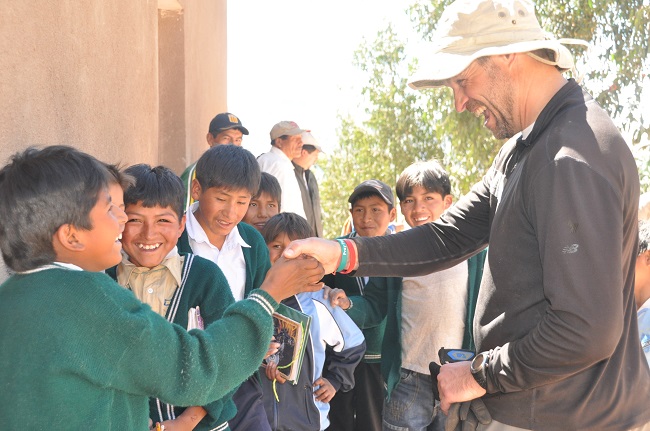
At the end of the day, upon returning to the bunk house, the team was pretty dirty. Because of the lack of heated water, tradition has been that only one or at most two showers are taken while there. Ed Ettel has broken tradition by bringing solar showers (black bladder: fill them up and leave them in the sun for a few hours, then hang it in a tree). Therefore a number of the guys got clean without having to gasp for breath. (On a personal note, I believe this constitutes cheating, and suggest that all first timers should still have to take a cold shower!).
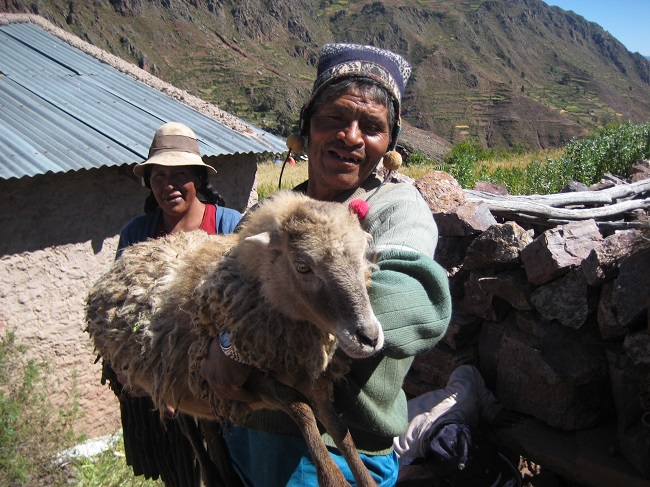
Besides crops, many farmers also have some sheep or goats.
For tomorrow, the plan is still to teach the rocket stove, but the team is going to do so at the high school in Quesimpuco. This will have broader reach, as students from multiple villages attend the school and can take this ‘technology’ back to their home communities.

Students come from surrounding villages to attend the high school in Quesimpuco. By teaching the rocket stoves to these students, the team will be able to reach many communities without having to travel, since the teenagers can teach their parents and neighbors.
The team has also received a request from last year’s water project to come back and christen that irrigation / cistern system. It has been completed and is in use, but there has not been an official christening, so they will hike over for that tomorrow, camping in the same eucalyptus grove they did last year.
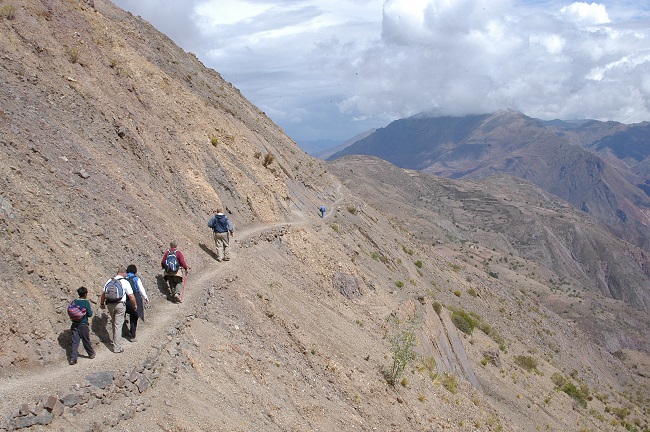
Teams hike on trails carved into the steep mountains to reach villages.


















